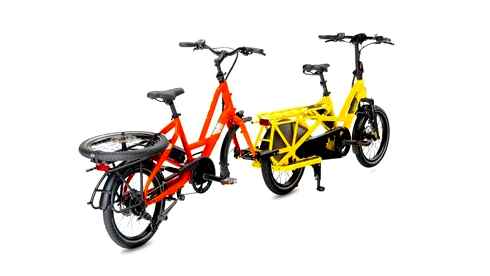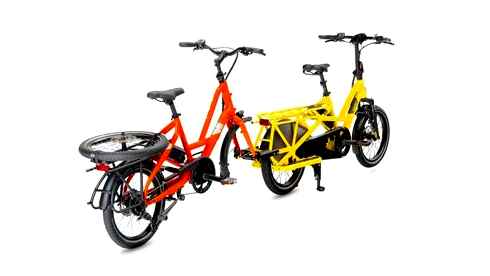DIY E-Bike Out of Car Alternator
About: Being a science student i love to indulge in projects related to engineering as i love to learn things practically. About DIY KING 00 »
This alternator might seems like a regular one but in our previous project we have converted it into a powerful brushless motor the link to is given below.
Now if you look closely we have got a permanent magnet rotor right inside this car alternator and today we are going to use it to convert this bicycle into and electric one so with that being said its time to get our hands dirty.
Step 1: Making the Drive Mechanism
As we have previously converted this bicycle two times by using this regular chain sprocket that comes with the bicycles but for this time we are using set of these two pair of gear which is commonly used 125cc motorbike. these gear having 18 teeth and the bigger one having 72 teeth which will gives us about 4 time of RPM reduction to increase the torque 4 times.
For making these gear usefull for our bike we have to undo those rivits on big gear and drilled the holes for mounting it on the aluminium bush which will later join with the rear wheel.
Step 2: Motor Mount
In order to mount our alternator we have used 5mm thick metal strip and cutted in two pieces and welded them togther for securing both of the front mounting holes of our alternator.
To mount the alternator plate to our bicycle frame we have cutted the rear wheel mounting plate in an angle to get the perfect gear working possition, so we have welded the mounting plate to the main frame. after welding we done some grinding in order give it a finish look but there is some bending in the frame because we have welded the main plate with rear plate and haven’t use nay support so to give it a rigid and reliable support we have welded some vertical plade in order to rainforce all the weak point.
To protect our motor mount from rusting we just painted it using matt black auto paint.
Benefits of lithium batteries
Now that we’ve got the summary of different types of lithium batteries out of the way, lets look at how these lithium batteries stack up as a whole.
One of the first advantages of lithium batteries is their small size. You can fit a lot of lithium on a bicycle frame. This alone can give your ebike some seriously impressive range. Two or three mid to large capacity lithium batteries could easily fit on one ebike, giving potential ranges of 100 miles (160 km) or more. I guess this would be great for people that don’t mind sitting on their bike for three to five hours at a time, or that for some reason don’t want to charge up for weeks (hey, when riding your ebike through a zombie apocalypse, the last thing you want to be doing is searching for an outlet).
Lithium batteries made specially for ebikes often come with specific bicycle mounting points making them easy to bolt to the bike frame, seat post or rear rack. If you go with a different type of lithium battery without ebike specific mounts, you’ll likely have to put it in a bag on the bike, which is still a good option, and one that I even prefer sometimes. (Link to blog post of mine about center frame triangle batteries).
Lithium batteries are also small enough to allow you to place your batteries pretty much anywhere on your bike. This is especially true for people who want to assemble their own pack or use heat shrink wrapped lithium batteries instead of hard case lithium batteries with prefabricated bicycle frame mounts. This can help spread the weight around or hide the batteries to make a stealthier bike.
Lithium batteries (with the exception of RC LiPos) last much longer than lead acid batteries. LiPo batteries are usually only rated for a few hundred charge cycles but LiFePO4 batteries keep going after thousands of charge cycles. Every manufacturer rates their batteries differently, but most LiFePO4 ebike batteries will be rated for between 1,500 to 2,200 charge cycles.
Disadvantages of lithium electric bicycle batteries
A big downside of lithium batteries is that they are much more expensive than lead acid batteries. vary depending on the voltage and capacity of the lithium battery, but standard ebikes usually have lithium batteries starting in the 300 range and rising quickly from there. Most bikes I build have lithium batteries in the 400-500 range.
However, when you factor in the shorter life cycle of lead acid batteries, they become comparable to lithium batteries over the entire life of the electric bicycle. For example, a lithium battery may cost five times the price of a lead acid battery, but it could easily last five times as long as well, making the price about the same over the life of the lithium battery. You’d have to buy at least four replacement lead acid batteries (maybe even more) by the time your lithium battery finally kicks the can.
One other disadvantage of lithium batteries that isn’t talked about often, but should be, is their potential for theft. Lithium ebike batteries have become huge targets by bike thieves as a result of their combination of small size and high price tags (the same factors that keep shaving razor cartridges behind lock and key at the drug store). Thieves see an easy target and ample resale market, meaning you have to be extra careful about locking your ebike up and leaving it alone in public.
Lithium ebike battery partially removed from rack
e bike BATTERIES EXPLAINED!
Most lithium batteries that are designed to mount to ebikes also come with some form of locking system. These have varying degrees of effectiveness. The type with a little pin that slides into a thin sheet of steel are the easiest to steal by mangling the thin steel locking plate. Just take a look at your battery and ask yourself “how easily could I steal this battery if I had some basic hand tools and a 60 second window of opportunity?”
For this reason I like to either add a second lock specifically through the handle of my lithium battery (if it’s a removable style battery) or permanently secure it to the bike so it isn’t removable at all. The second option is less convenient because it means you have to bring the charger to the ebike, but it’s a much more secure option if you find yourself locking your ebike in public often.
Lead acid ebike batteries
When it comes to lead acid batteries for ebike use, you’ll generally be looking for what’s called a “sealed lead acid” or SLA battery. SLAs come sealed in a hard plastic case and can be turned in any orientation safely without leaking acid. This makes them appropriate for ebike use. Wet cell lead acid batteries, like many car batteries, would leak dangerous acid if turned on their side or upside down, making them a bad idea for use on an electric bicycle, which is a lot more likely to get knocked over than a car. Remember to stick with SLAs – not wet cell lead acid batteries – for electric bicycle use.
Lead acid batteries are much larger and heavier than lithium batteries, limiting their placement on ebikes. They almost never come packaged with ebike specific mounting hardware which means that they generally have to go in a bag on the rear rack or in panniers on either side if the rear wheel. Mounting them up high on the rack isn’t a good idea either because it will negatively affect handling. Generally speaking, you want to mount your batteries as low as possible to keep the center of gravity of the ebike lower towards the ground. This will significantly improve your ebike’s handling.

Advantages of lead acid batteries for ebikes
The biggest advantage of lead acid batteries is their price: dirt cheap. Lead acid batteries can be purchased from many different online retailers and local stores. Purchasing SLAs locally helps save on shipping and makes them even cheaper. Many hardware and electronic stores carry them. Even Radioshack has them, though you’ll pay more there.
Another advantage of lead acid batteries is their high power output potential. Lithium batteries generally don’t like to handle too much current. SLAs, on the other hand, can provide huge amounts of current. If you are planning a very high power electric bicycles, SLAs might be a good option for you.
Options For Charging Without A Charger
Power Bank
A power bank is a portable battery pack that you can use to charge your phone, laptop, or other electronic devices. Many power banks have a USB port, which you can use to charge your eBike battery. To do this, you will need a USB-to-battery adapter. You can find these adapters online or at a bike shop. Keep in mind that a power bank may not have enough capacity to fully charge your eBike battery, especially if it is a large battery.
If you don’t have a power bank, you can still charge your battery using a cord and a power source with a USB port. This could be a computer, a wall socket, or any other electric device that has a USB port. Simply connect the cord to the device and to the battery, making sure that the device is compatible and that you are following the manufacturer’s instructions for charging the battery.
Solar Panel
If you have a solar panel, you can use it to charge your eBike battery. To do this, you will need a solar panel with a built-in charge controller and a battery charger that has a solar panel adapter. This can be a good option if you are traveling off the grid or if you have a large solar panel setup at home.
It is important to take precautions when handling solar panels to ensure your safety. Wear protective gear such as gloves, closed shoes, and eye shields to protect yourself from electric shocks and exposed wiring. Depending on the size and weight of the solar panels, it may be necessary to have two people present to adjust their position. This will prevent any accidents or injuries while handling the panels.
Generator
To charge an eBike battery using a generator, you will need a battery charger that has a generator adapter. You can then connect the generator to the battery charger using the adapter. Start the generator and turn on the battery charger, following the manufacturer’s instructions for both the generator and the battery charger. The generator will power the battery charger, which will then charge the ebike battery.
Make sure to follow the manufacturer’s instructions and safety precautions when using a generator to charge your eBike battery. It is important to keep the generator in a well-ventilated area and to use it according to the manufacturer’s guidelines to avoid any accidents or injuries.
Charging Station
As e-bikes become increasingly popular, there has been a corresponding rise in production and the development of charging infrastructure for these vehicles. In many areas, it is now possible to find e-bike charging stations both indoors and at various restaurants and bars.
If you find yourself with a low battery while out on a ride, you can locate a nearby charging station and recharge your e-bike battery there. Simply navigate to the station, remove the battery from your e-bike, and place it in a compatible charging port. Keep in mind that some stations may require a fee and availability may vary by location.
Car Charger
If you have a car with a cigarette lighter socket, you can use a car charger to charge your ebike battery. You will need a battery charger that has a car adapter.
It is important to exercise caution when charging your e-bike using a car battery as a power source. The car battery has a higher voltage than the e-bike battery, so it is necessary to regulate the current flow to prevent damage to the e-bike battery. To do this, you can connect light bulbs to the wiring between the car battery and the e-bike battery. The light bulbs will act as a resistor, reducing the flow of current to a safe level.
It is important to keep an eye on the charging process when using this method, as it is possible for the e-bike battery to become overheated or receive too many amps of power, leading to long-term damage.
Final Thoughts
In conclusion, there are some options for charging your eBike battery without a charger. These options include using a power bank, solar panel, generator, and charging station. Consider the feasibility and convenience of each option to determine which one is best for you. Always make sure to follow the manufacturer’s instructions and safety precautions when charging your ebike battery. Remember to look after your eBike battery and charge it in the right way to extend its life.
Now that you know how to charge your eBike battery without a charger, it’s important to protect your investment with the right insurance. Oyster offers comprehensive eBike insurance policies that can protect your ebike against theft, damage, and other unexpected events. Get peace of mind and secure your ebike with Oyster. Act now and get a free quote in less than 2 minutes!
Disclaimer: The information provided in this article is based on general knowledge and research from various sources. These ideas are not endorsed or verified and Oyster takes no responsibility for the accuracy, effectiveness, or safety of these methods. It is always recommended to use the manufacturer’s recommended charger and follow their guidelines for safe charging. If you have any concerns or questions, it is best to consult the manufacturer or seek professional assistance. Use these alternative methods at your own risk, and exercise caution to prevent any damage to your eBike or battery.

What’s being done about it?
There’s not currently much regulation of e-bikes and scooters.
Regulation could go in several directions. One would be to require devices be certified under the safety standards recommended by Underwriter Laboratories, a group that has produced safety certifications for electric products for over a century.
Earlier this month, the New York City Council passed a package of local bills that would require all e-bikes and other electric mobility devices sold, rented or leased in the city to be certified under the appropriate UL safety standards.
5 Alternative Ways To Charge Your E-Bike Battery | Powering Up On The Move
The Two-Way
The legislation also bans the sale of uncertified or used batteries. Retailers found to be in violation of the laws can be fined up to 450,000 per violation.
At the national level, the Consumer Product Safety Commission issued a letter in December calling on more than 2,000 manufacturers, importers and retailers to voluntarily adhere to UL safety standards for e-bikes and other micromobility devices.
Following the guidelines significantly reduces the risk of injuries and deaths from micromobility device fires, wrote Robert Kaye, the agency’s director of compliance and field operations. Consumers face an unreasonable risk of fire and risk serious injury or death if their micromobility devices do not meet the level of safety provided by the relevant UL standards.
Additionally, the agency has vowed to pursue penalties against companies who fail to inform the CPSC of safety hazards.
Recommendations to keep yourself safe
The main recommendation that comes from both the CPSC and the FDNY is to be present while you’re charging your device, and to not charge it while you’re sleeping. Unplug the device once it is fully charged.
The CPSC also recommends that you only use the charger that came included with your device and to follow the manufacturer’s instructions for proper charging.
Fire officials add that you should charge your device away from flammable materials like furniture and pillows, and that you shouldn’t charge or store your device in a location that blocks your access to an exit.
When you’re buying an e-bike or other micromobility device, try to find what battery comes stocked with it, Pecht said. Does the maker of the device state where the battery is sourced from? Is the battery made by a reputable manufacturer? Experts also suggest that consumers look for batteries that have a UL certification.
Energy
Be warned that some online sellers may falsely claim to have UL certification. Others may sell re-wrapped batteries, meaning counterfeit batteries produced to appear as though they’re made by reputable manufacturers.
If your battery starts to fail, it may be safest to buy a new one. Don’t repair anything yourself, and buy from a company where you know that they’re using brand-name batteries, Pecht said. It may work best to buy a new battery from the same company that produced your bike or scooter.
To dispose of an old battery, bring it to a battery recycling center or other e-waste facility. Don’t throw away lithium-ion batteries in conventional trash.
